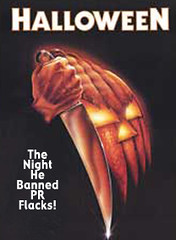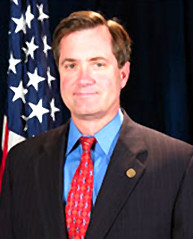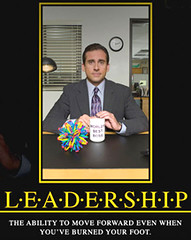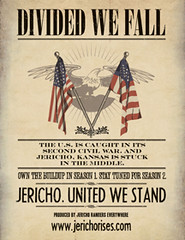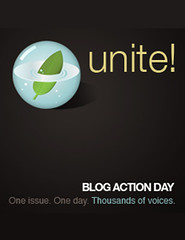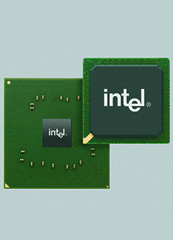If you are a public relations professional who likes to pitch everything in your arsenal of potential communication and hope to get lucky, Chris Anderson, editor in chief of Wired, has sent you a message right in time for Halloween... BOO! YOU’RE BANNED!
Not only are you banned, but you are also publicly banned with your e-mail address published for the whole world, including spam bots, to see. Yikes!
It’s days like that when I am so glad that I don’t own a public relations firm (though we provide support services). It’s days like that when I wish all the public relations practitioners took my spring class at UNLV. Don’t spam publications, I tell students (most of whom are already working). They don’t listen, but I do tell them.
Based on the comments alone, some PR folks are not ready to listen to Anderson either. (They’re more concerned that they are on the list.) Sure, I think publishing the e-mails might have been a bit over the top, but I also know that warnings don’t seem to do the trick or treat for some flacks. Maybe a shock-and-awe slasher fest was warranted.
It’s a wake-up call that Mark Frauenfelder at BoingBoing agrees with. For the past week or so, he’s been “blacklisting PR flacks” from his email inbox too, but he stopped short of publishing a list (those folks may never know they are banned).
For anyone who finds this surprising, Anderson and Frauenfelder are just revealing what journalists and editors have been doing for years and years, long before email blasts became all the rage. Some public relations people just didn’t know it.
Three bad or irrelevant releases, if you were lucky, and the firm’s public relations envelope started going into the trash unopened. A few years later, I personally saw reams of paper piling out of the fax machine at the Las Vegas Review-Journal; a mountain of uninteresting and poorly written blast faxes. And then, as editor of a hospitality trade publication, I’ll never forget warning a publicist to stop sending non-news with a 10MB photo every other day. He responded by sending me five photos the next. BANNED!
The horror. The Horror. THE HORROR.
More horrible is that some comments on Anderson's post allude to the idea that it’s always better to call editors instead. Look, in case you missed it, Anderson is no more likely to field 300 calls a day then he is to skim 300 emails a day. So the solution sequels floating around out there may be more frightening than the original.
Here’s an idea: give editors and journalists what they want because unlike what Kent State University tells its journalism students — PR people are obstacles on the pathway to the truth — PR people are supposed to make the job of an editor and/or journalist easier, not harder. (Bill Seldzik’s blog is how I learned about the PR witch hunt at Wired. Good one, Bill!)
Did you get that? Give them what they want! Some like e-mails, some like calls, some like attachments (some don’t), and some even like releases sent to them via fax or snail mail (if you can imagine).
None of them want to "figure out" if your client has anything interesting for them or for you. None take any joy in reading painfully written news releases or ridiculous pitches. And if you don’t know who is who, then you aren’t really doing your job.
Personally, wearing my past (and future) editor hat, I think banned on first abuse is a bit extreme. I give flacks at least three tries to get it right, under the assumption that everybody has a bad day. Then I ban them.
I also hate pitch calls. There’s nothing worse than being stopped in the middle of a deadline to take a call from a flack who wants to chat it up like a used car salesman as if he or she wants to develop a relationship. Calls are reserved for clients or people who actually do something interesting enough that as an editor, I might call them.
My point here is: don’t talk about authenticity if all you want to do is pitch non-news and non-not-news while pretending we’re buddies. I actually like news releases, provided they are well crafted, but mostly because it’s easier to delete them based on the subject line (and lead line if I get past the subject line).
I can't speak for Anderson or Frauenfelder, but most editors and journalists tend to be more forgiving if they sense they weren’t simply added to a spam list. So here's a tip: pitch when it is so good that it smacks of a groundbreaking exclusive. Email or mail releases (as they prefer) to the appropriate people (some editors like them; some don’t). Add attachments only when you’ve been invited to do so.
You never know. If you do it right, maybe you will develop a relationship out of mutual respect. Now that would be scary.
Happy Halloween!

Not only are you banned, but you are also publicly banned with your e-mail address published for the whole world, including spam bots, to see. Yikes!
It’s days like that when I am so glad that I don’t own a public relations firm (though we provide support services). It’s days like that when I wish all the public relations practitioners took my spring class at UNLV. Don’t spam publications, I tell students (most of whom are already working). They don’t listen, but I do tell them.
Based on the comments alone, some PR folks are not ready to listen to Anderson either. (They’re more concerned that they are on the list.) Sure, I think publishing the e-mails might have been a bit over the top, but I also know that warnings don’t seem to do the trick or treat for some flacks. Maybe a shock-and-awe slasher fest was warranted.
It’s a wake-up call that Mark Frauenfelder at BoingBoing agrees with. For the past week or so, he’s been “blacklisting PR flacks” from his email inbox too, but he stopped short of publishing a list (those folks may never know they are banned).
For anyone who finds this surprising, Anderson and Frauenfelder are just revealing what journalists and editors have been doing for years and years, long before email blasts became all the rage. Some public relations people just didn’t know it.
Three bad or irrelevant releases, if you were lucky, and the firm’s public relations envelope started going into the trash unopened. A few years later, I personally saw reams of paper piling out of the fax machine at the Las Vegas Review-Journal; a mountain of uninteresting and poorly written blast faxes. And then, as editor of a hospitality trade publication, I’ll never forget warning a publicist to stop sending non-news with a 10MB photo every other day. He responded by sending me five photos the next. BANNED!
The horror. The Horror. THE HORROR.
More horrible is that some comments on Anderson's post allude to the idea that it’s always better to call editors instead. Look, in case you missed it, Anderson is no more likely to field 300 calls a day then he is to skim 300 emails a day. So the solution sequels floating around out there may be more frightening than the original.
Here’s an idea: give editors and journalists what they want because unlike what Kent State University tells its journalism students — PR people are obstacles on the pathway to the truth — PR people are supposed to make the job of an editor and/or journalist easier, not harder. (Bill Seldzik’s blog is how I learned about the PR witch hunt at Wired. Good one, Bill!)
Did you get that? Give them what they want! Some like e-mails, some like calls, some like attachments (some don’t), and some even like releases sent to them via fax or snail mail (if you can imagine).
None of them want to "figure out" if your client has anything interesting for them or for you. None take any joy in reading painfully written news releases or ridiculous pitches. And if you don’t know who is who, then you aren’t really doing your job.
Personally, wearing my past (and future) editor hat, I think banned on first abuse is a bit extreme. I give flacks at least three tries to get it right, under the assumption that everybody has a bad day. Then I ban them.
I also hate pitch calls. There’s nothing worse than being stopped in the middle of a deadline to take a call from a flack who wants to chat it up like a used car salesman as if he or she wants to develop a relationship. Calls are reserved for clients or people who actually do something interesting enough that as an editor, I might call them.
My point here is: don’t talk about authenticity if all you want to do is pitch non-news and non-not-news while pretending we’re buddies. I actually like news releases, provided they are well crafted, but mostly because it’s easier to delete them based on the subject line (and lead line if I get past the subject line).
I can't speak for Anderson or Frauenfelder, but most editors and journalists tend to be more forgiving if they sense they weren’t simply added to a spam list. So here's a tip: pitch when it is so good that it smacks of a groundbreaking exclusive. Email or mail releases (as they prefer) to the appropriate people (some editors like them; some don’t). Add attachments only when you’ve been invited to do so.
You never know. If you do it right, maybe you will develop a relationship out of mutual respect. Now that would be scary.
Happy Halloween!






